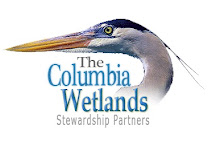The first annual Columbia Salmon Festival will be taking place September 28-October 1, 2011 in the Columbia Valley. This inaugural Festival is being hosted by the Shuswap Indian Band and Akisqnuk First Nation and proudly supported by the Canadian Columbia Inter-Tribal Fisheries Commission, Columbia Wetlands Stewardship Partners and Fairmont Trails Society.
The mission of the festival is to inform people about the history and future of salmon in the upper Columbia, and their cultural significance. The Festival will consist of events and activities in the Invermere to Fairmont Hot Springs areas including Youth Salmon Awareness Field Trips, guest speakers presentations, a Charity Golf Tournament, the Salmon Monument Celebrations and conclude with the Gala Salmon Dinner with Celebrity Chef David Wolfman.
This historic event will involve: First Nations and US Tribe Political Leaders; Federal, Provincial, Municipal and Regional Leaders; Members of the Ktunaxa, Okanagan and Shuswap Nation; Columbia Valley Residents; and members of the General Public.
For more information about the festival and events go to Columbia Salmon Festival and the Columbia Valley Pioneer page 16
For follow up story go to eKNOW East kootenay Online Weekly
For follow up story go to eKNOW East kootenay Online Weekly





































